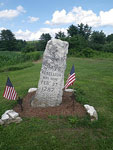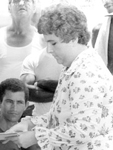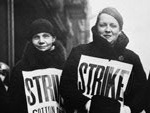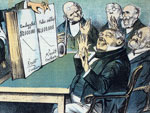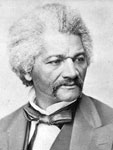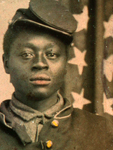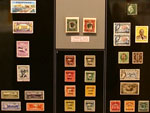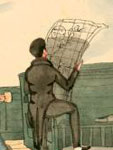Vitamins in Chocolate Cake: Why Use Historical Fiction in the Classroom?

One of the great pleasures of my job as a writer for American Girl is getting letters from my young readers. Over the years, I’ve had tens of thousands of letters, every one as unique, sweet, earnest, and quirky as its writer. Very often, my correspondent asks me, “Why do you write about people who lived long ago?” And I write back, “Because I love thinking about what your life or my life would have been like if we had lived in another time, don’t you?” But that answer tells only one reason why I write historical fiction, and why I think it is a good idea to use historical fiction to teach history. There are other reasons, too.
First, I think historical fiction can make history matter—make it irresistible—to young readers. And it is important to make history matter, because reading about the past not only gives children factual information—sort of a mental timeline, for example, so that they know that the Revolutionary War happened before the Civil War—but learning about the past also allows, encourages, and teaches a child to identify with other voices, views, cultures, and times, which is a good life skill. Reading about the past teaches empathy and compassion. It helps a child see the similarities that lie just underneath our differences.
Ah, but how do we capture the children’s interest? How do we pique their curiosity? How do we engage their imaginations? Well, that’s the magic of historical fiction. And that magic is a second reason why I write historical fiction, and why I think it is good to use it in the classroom. I believe that good historical fiction exercises a child’s imagination through a vicarious experience. It leads children to use themselves and their own lives as comparisons to the characters that lived long ago and often, far away, to reflect on their own experience, to ask their families questions. It awakens awareness, perks up perception, sparks conversations. Reading historical fiction can lead a child to ask, ”What’s my voice? What’s my view? Which side should I be on? Is there a right side?“ So really, what we’re trying to do through historical fiction is to help our students realize they are what history is. What they do matters. They had better pay attention. What we’re trying to do is to sort of tickle a moral intelligence, a mindfulness, a sense of responsibility, into being.
Helping children to be empathetic to others and more aware of themselves are two good and worthy reasons to use historical fiction, but to me, there’s a third reason that’s most important of all. I think the best word to describe it is delight. Teachers and writers want to inspire enthusiasm. We want to say to children, “Oh, look! Isn’t that cool? Can you believe how wacky and wild and fascinating the world is? The universe is abundant and it’s all out there waiting for you.” Historical fiction helps us fire up our students and readers because it uses emotion to make the facts matter. It uses emotion to teach gentle life lessons, and to form a ribbon of connection between the child in the classroom and the characters in the story.
Good historical fiction is funny, challenging, amusing, absorbing, scary, sad, and full of—here’s that word again—delight. Historical fiction is inspired by the child and inspires the child in return. It celebrates the child. It respects the child. Good historical fiction meets readers where they are right now, engaged with school, family, and friends, feeling the drives for love and friendship, and feeling the conflict between being a member of society and yet defining one’s self as a unique and independent being. It grows out of the child’s nature, which is energetic, curious, merry, passionate, exuberant, and earnest. So you might say that my readers themselves are another reason why I write historical fiction. And your students are the reason why historical fiction is a sturdy and effective vehicle for teaching history and a gift—a very good gift—to use in the classroom.
Say you're already using historical fiction in the classroom—what about asking your students to write some of their own? High school teacher Ron Gorr has some ideas. Just as students should read historical fiction along with primary and secondary sources, so should students write it drawing on primary and secondary sources. Ask students how they think their fiction (and the fiction they read) reflects the writer as well as her or his historical research. What in the story shows modern ways of thinking? What might people living at the time the stories are set in think if they read them?
